Automotive history is full of surprises.
Some cars, upon their debut, seemed destined for ridicule or failure—plagued by unconventional styling, unremarkable specs, or rocky rollouts.
Yet, in a twist that left critics and enthusiasts stunned, these very vehicles rose above their humble beginnings.
What makes a car legendary isn’t always obvious from its first impression.
This article explores 20 cars that defied all odds, transforming from supposed flops into icons, and proving that greatness sometimes emerges from the most unlikely places.
Sedans have come a long way from their humble beginnings as practical family haulers. Today’s four-doors don’t just carry groceries—they outrun sports cars and even muscle cars at the drag strip.
Manufacturers have harnessed cutting-edge technology, turbocharging, and hybrid systems to infuse sedans with astonishing horsepower and razor-sharp handling.
It’s never been easier to blend everyday utility with sheer speed. The modern sport sedan is a chameleon: comfortable commuter by day, backroad thriller by night.
Let’s explore ten sedans that redefine what it means to be practical—without sacrificing an ounce of excitement.
With subtle fanfare and a stiff upper lip, Bentley has unveiled a redesign of its Bentley Wings emblem. The new emblem—the fifth iteration of the “Winged B”—is being introduced along with a concept car to be revealed on July 8, 2025, coinciding with the opening of a new Design Studio in Crewe.
Logo redesigns can be a risky proposition, especially when it comes to their familiarity with the public. The current redesign has been created in-house by Bentley’s own design team, following a grand tradition that began in 1919 by Sir F. Gordon Crosby (alright, he was never knighted, what?). Subsequent redesigns have been implemented in 1931, the 1990s, and 2002, all maintaining the same charm. Says Bentley, “Crafted with confidence, care and creativity, the new emblem is symbolic of an exciting future” for the automaker. Note the sleeker design with the wings’ feathers dramatically refined with diamond patterns. The B in the center of the logo has been subtly redesigned in a manner so that it can stand alone on its own. It gives the impression that it could stand alone as the center jewel of a watch.
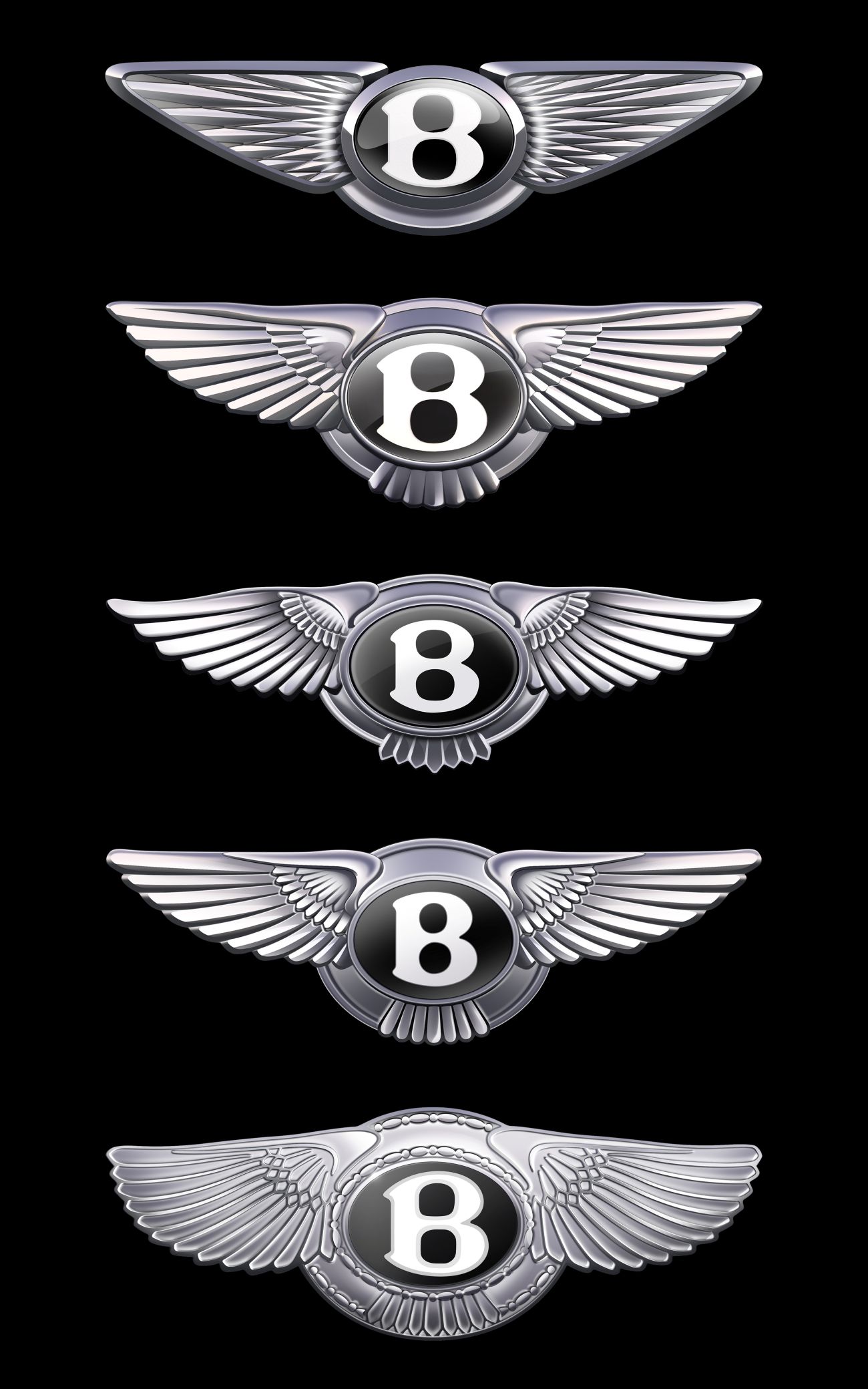
“If a luxury brand is the product of the stories it has created, then its emblem is its signature. In more than a century of history, this is only the fourth evolution of Bentley’s iconic Winged B, and redesigning it was a formidable task for which we’ve taken great care,” says Director of Design Robin Page. “In an era of ever-increasing complexity and fidelity from digitalisation, an exercise of simplification and refinement is a modern necessity—and so the new emblem is cleaner, sharper and more impactful than its predecessor. The new Winged B—and the concept car that introduces it—both symbolise a powerful, exciting future for this company and its exceptional, handcrafted products.”
The car that it’s attached to is expected to herald the beginning of a new era of Bentley design language. Though strictly a concept car, with no plans for production, the vehicle is expected to hint what Page and his team plan for future products while using inspiration from the past. The queue to view the new vehicle on July 8th forms at www.bentleymedia.com.
The Petersen Automotive Museum and the new ownership group for Willow Springs International Raceway recently announced an exciting partnership that will integrate one of the world’s preeminent automotive museums with the historic Southern California track.
The Petersen Automotive Museum will play a key role in elevating Willow Springs as a cultural and historical landmark through the addition of the Petersen Pavilion, an outpost of the Los Angeles institution.
“As one of the most iconic racetracks in America, Willow Springs is an ideal place to celebrate the passion, heritage and innovation that define the automotive world,” said Terry L. Karges, executive director of the Petersen Automotive Museum. “We look forward to bringing our expertise in storytelling and curation to create an environment where enthusiasts can engage with automotive culture in a dynamic and meaningful way.”
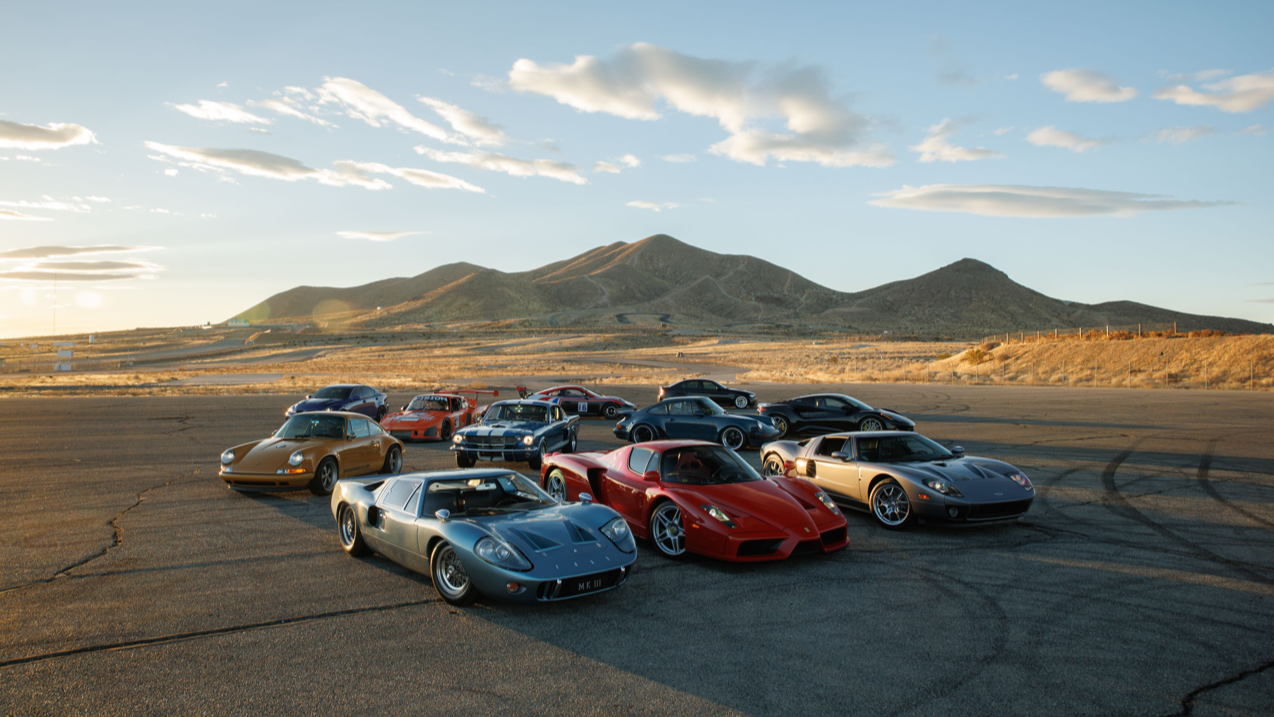
Willow Springs was purchased in April by an affiliate of CrossHarbor Capital Partners in collaboration with Singer Vehicle Design. The new ownership group is focused on preserving the facility’s rich history while making significant investments to establish it as the premier venue for automotive and motorsport enthusiasts.
“The Petersen has helped set the bar for automotive museums around the world, and it is the perfect partner to help us engage with the vibrant history and future of automotive culture,” said Sam Byrne, co-founder of CrossHarbor Capital Partners. “Stunning exhibitions and immersive storytelling are at the heart of what the Petersen does, and the showcase will be a tremendous asset as we reimagine Willow Springs Raceway.”
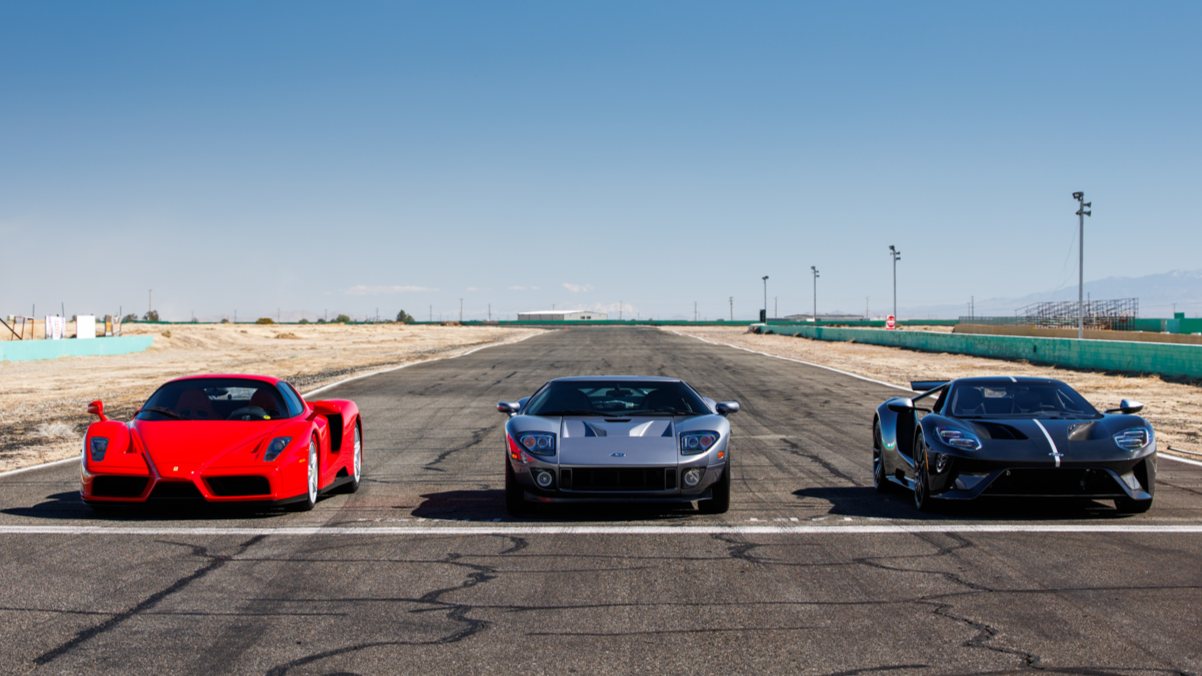
Maintaining public access is a key element of Willow Springs’ success, and the raceway will continue to host both public and private events. The Petersen Automotive Museum joins a growing list of industry experts who will help upgrade and improve the track experience. Former Formula 1 driver, Le Mans winner, and track designer Alex Wurz, head of Wurz Design, will enhance existing track design and safety, while Speedway Motorsports’ subsidiary Sonoma Raceway brings years of expertise in delivering premier on-track experiences to oversee track operations.
These days, most people think of the word “hybrid” as a reference to vehicles that combine gasoline power with electric power. But since that word is defined as a combination or mixture of any two different things, you could technically call a Ford Ranchero a hybrid of a car and a truck.
Now, if only it had the fuel economy of a Prius.
Featured on AutoHunter is this 1965 Ford Falcon Ranchero. The coupe-utility is being sold by a dealer in Anderson, California, and the auction will end Tuesday, July 8, 2025, at 12:15 p.m. PDT.
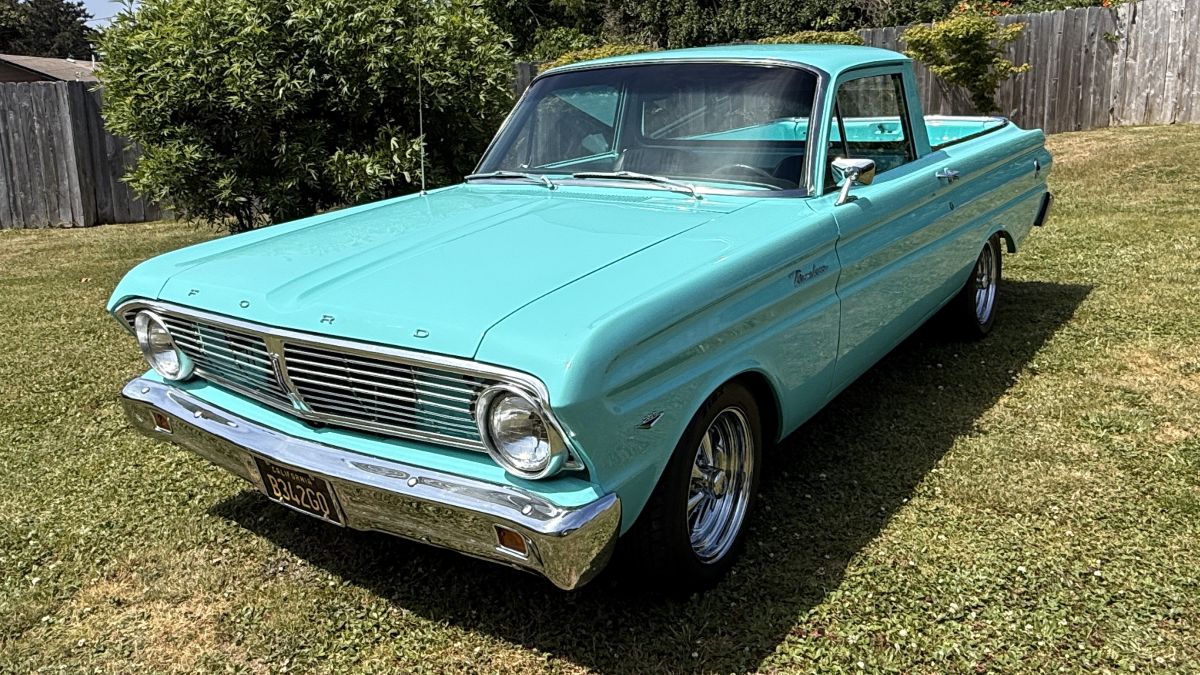
When compared to the first Ranchero (which came out in 1957), the 1960-through-1965 models were significantly downsized. Ford based the model on its two-door Falcon sedan delivery. In the interest of economy, the base engine at the time was a miserly 144ci inline-six (maybe it wasn’t so far away from Prius fuel-efficiency after all?). Ford advertising materials said, “Just one small thing keeps this pickup out of the luxury class: Low price!”
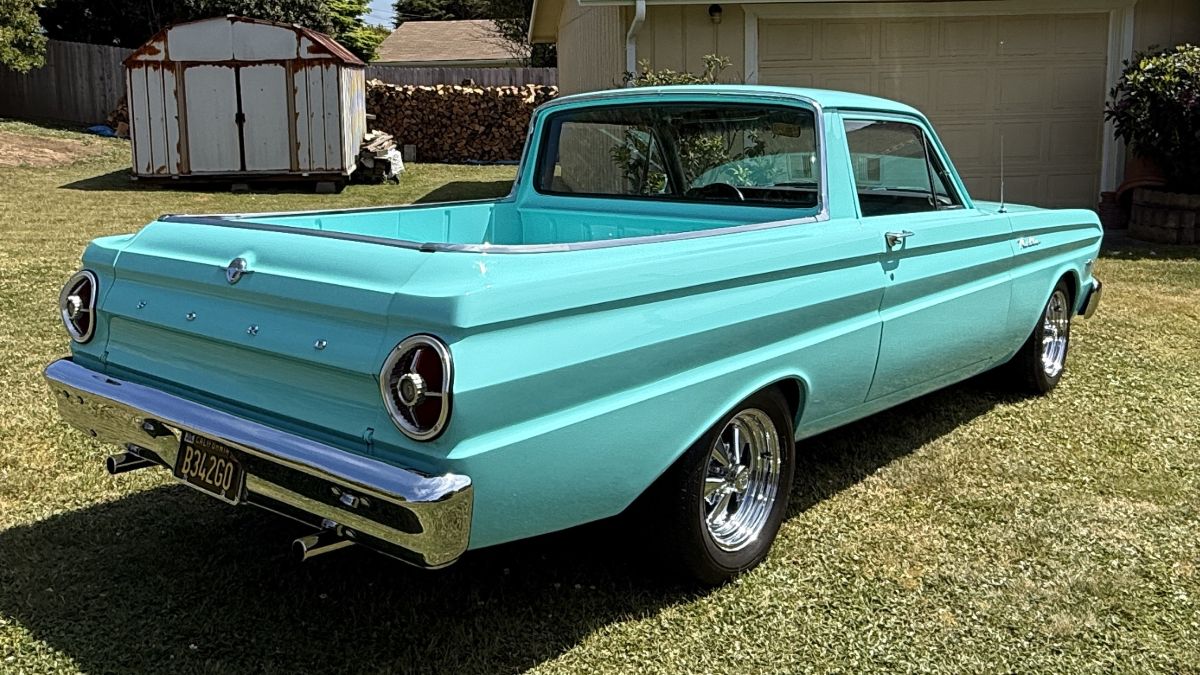
This Ranchero comes from the last year of its generation and, according to the AutoHunter listing, it went through a complete mechanical restoration under current ownership. The repainted turquoise exterior is eye-catching, and the 15-inch Cragar S/S chrome wheels are an era-correct upgrade for the mini-truck. Inspired by the space race at the time, the Ranchero’s taillight design was inspired by jet afterburners.
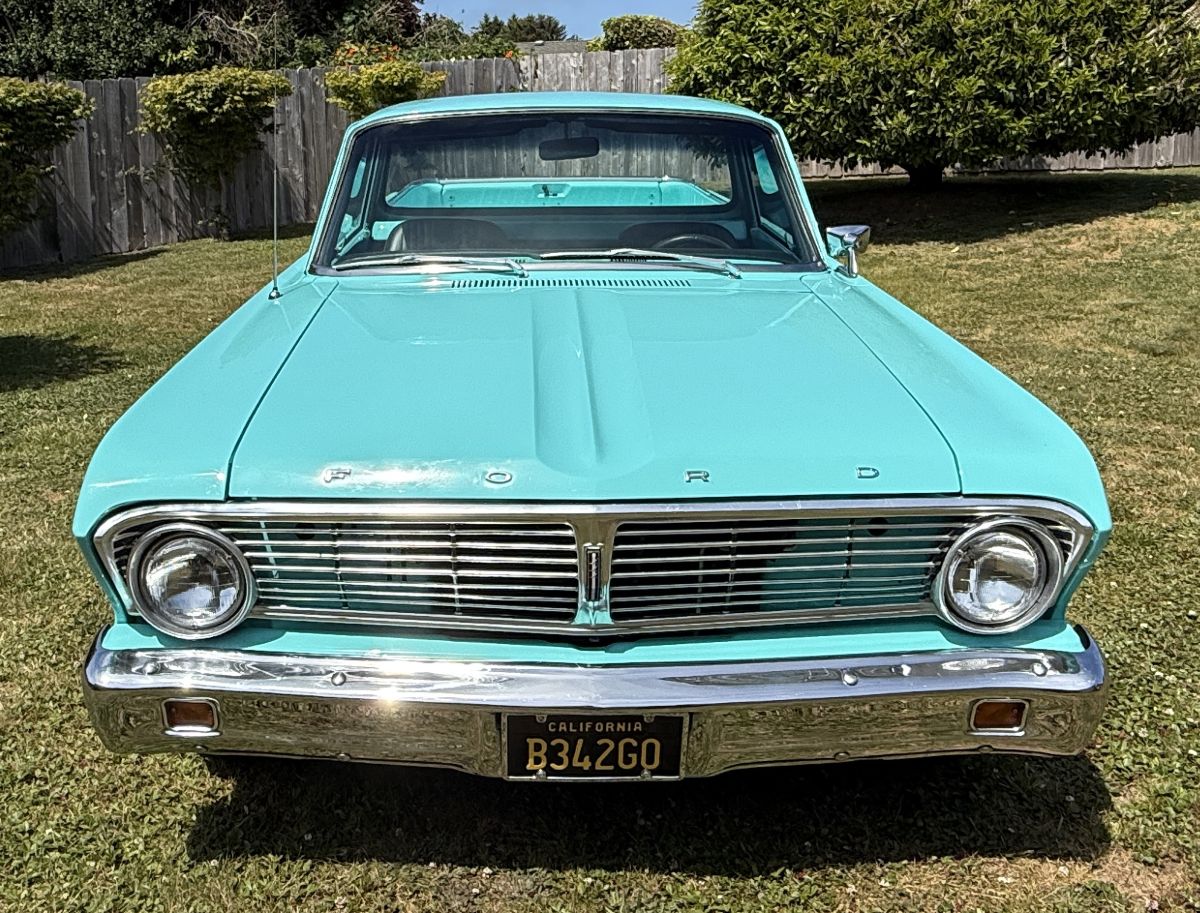
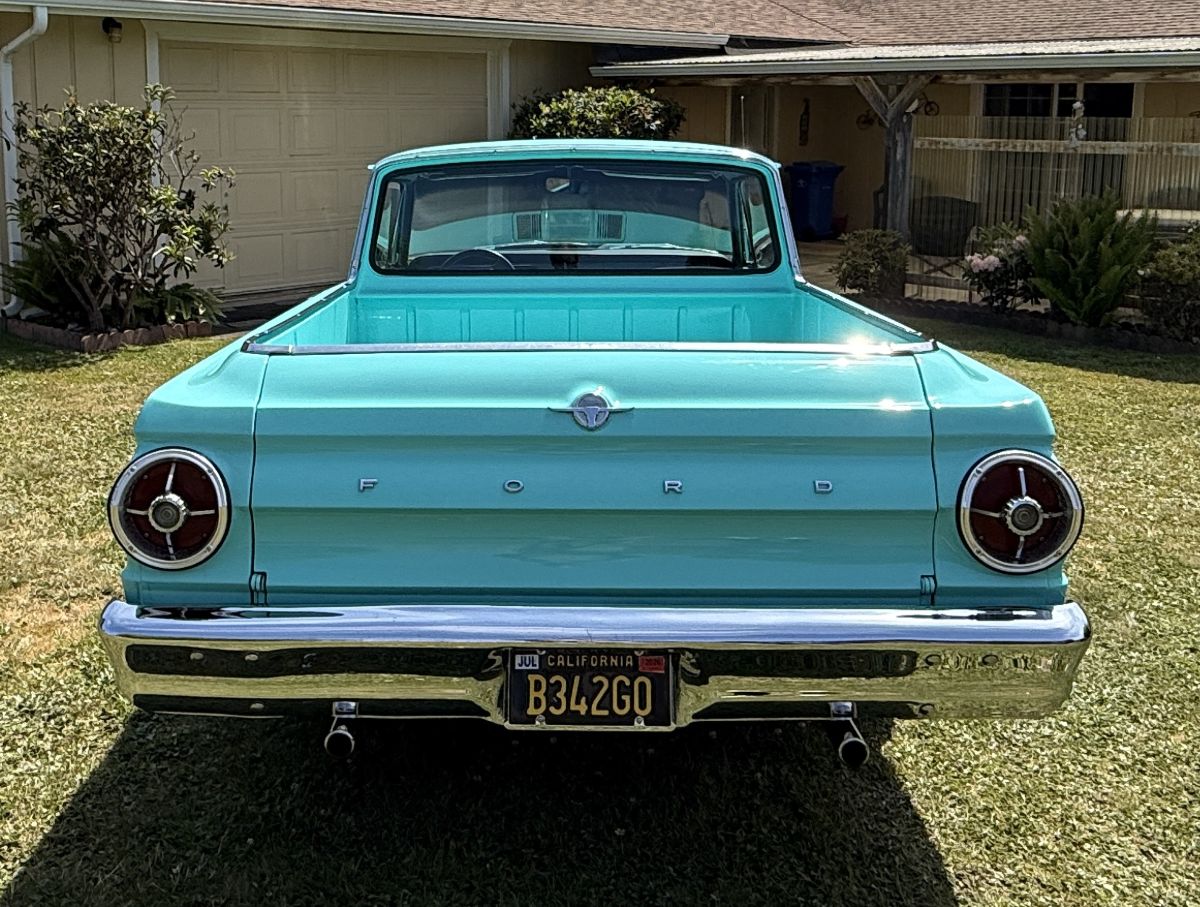
The interior is where the vehicle sets itself apart even more: Black vinyl bucket seats offer comfy seating for two, and upgrades include a custom center console, air conditioning, power steering, a tilt steering column, a Grant steering wheel and a Bluetooth-compatible retro-look sound system.
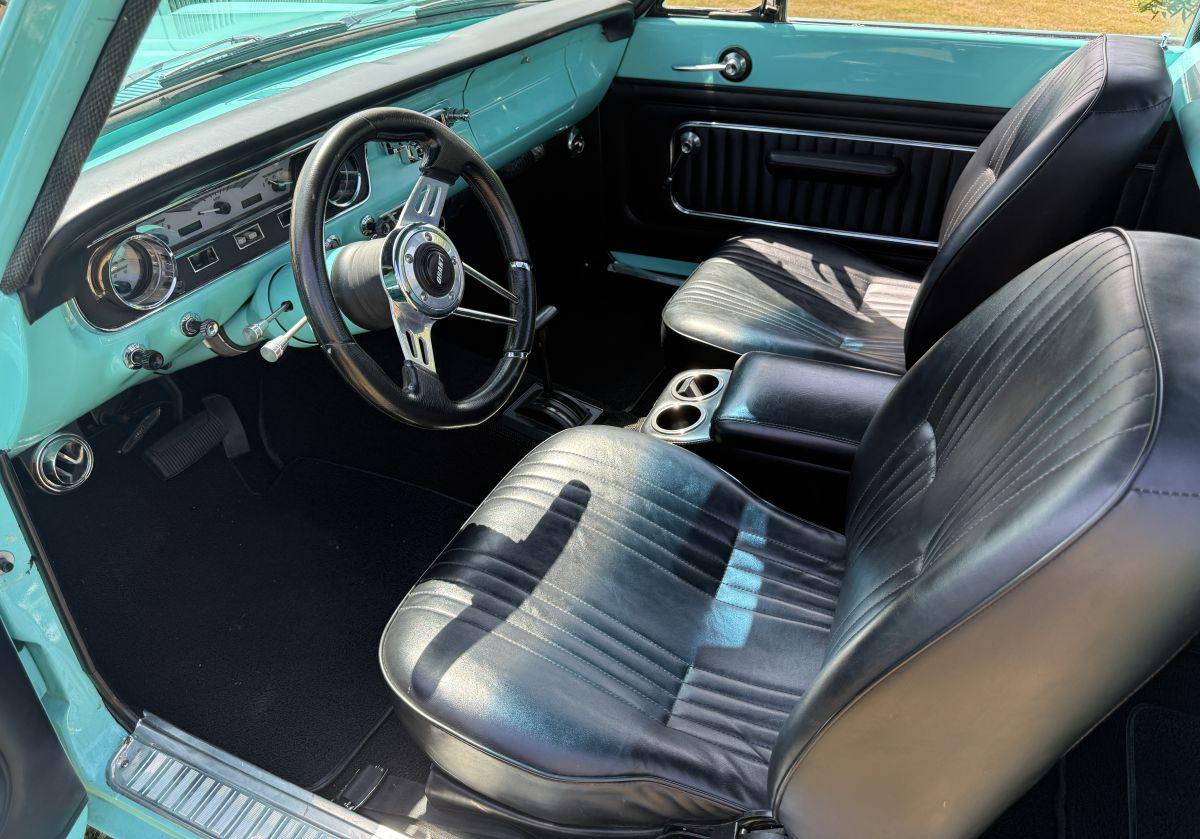
Power is generated by a 302ci V8 mated to a floor-shifted C4 three-speed automatic transmission. The listing says that the engine and transmission have both been rebuilt, and performance features include an Edelbrock 650cfm four-barrel carburetor, an Edelbrock intake manifold, an aluminum radiator, a Pertronix ignition and a Borgeson steering box. Lastly, Wilwood disc brakes and a dual exhaust system were added.
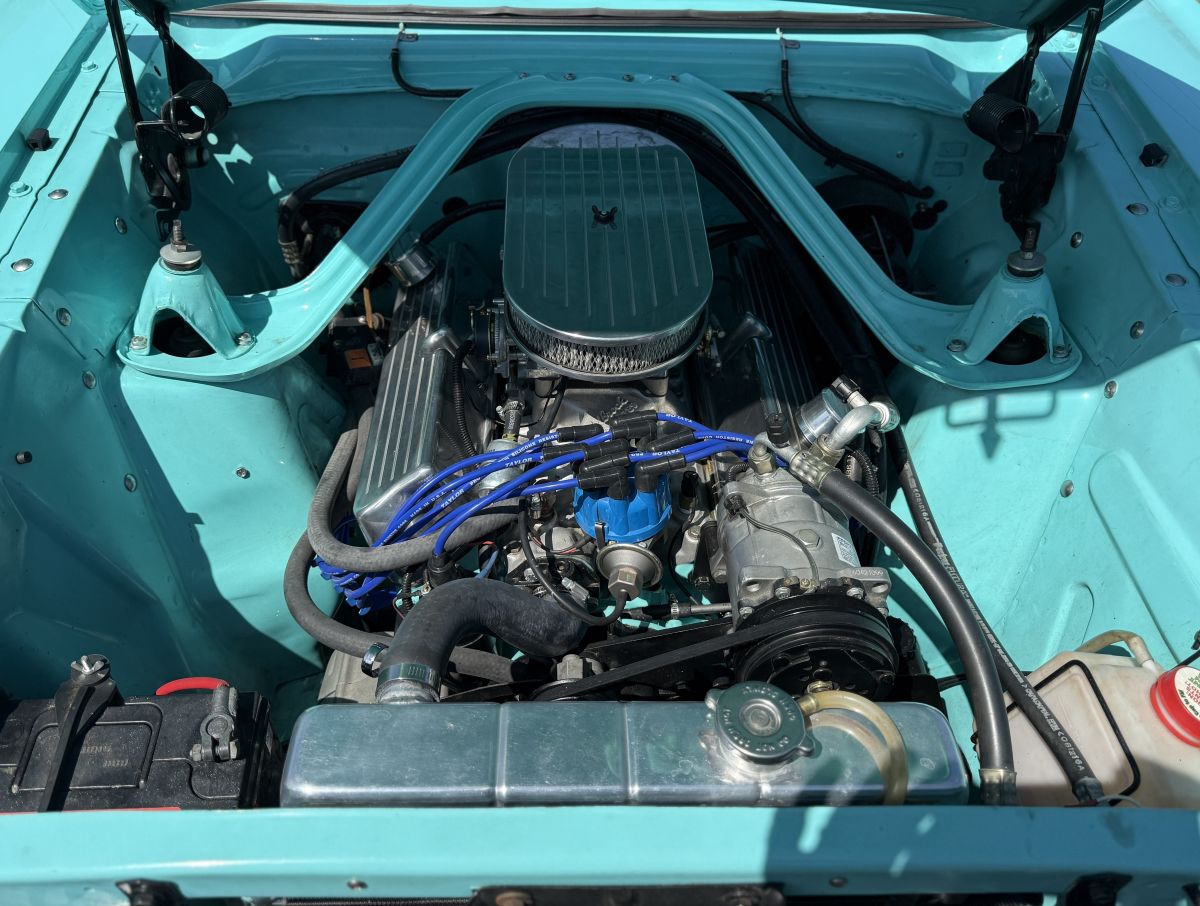
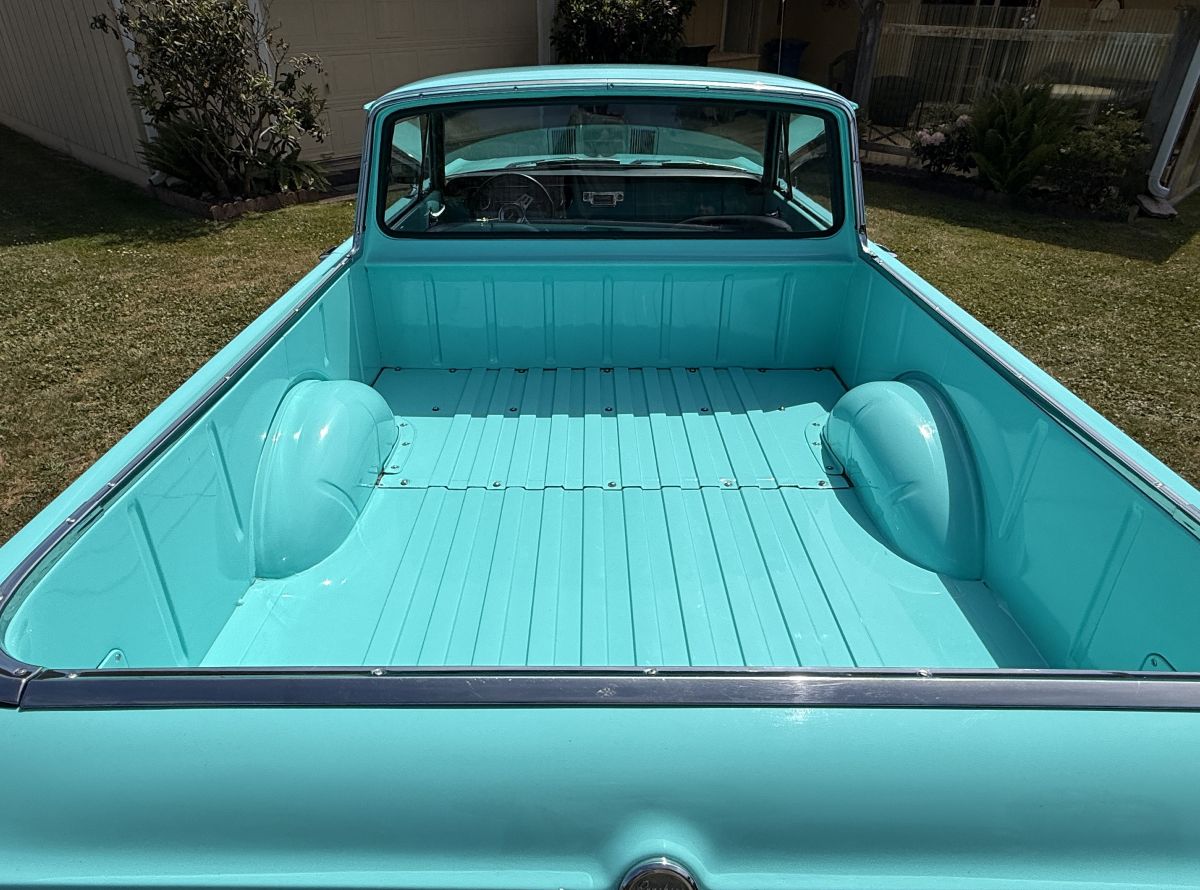
The Ranchero’s six-foot bed was rated at a payload of 800 pounds, giving it a slight advantage (to the tune of 100 pounds) over its closest competitor, the Chevrolet El Camino. Ford also touted the Ranchero’s low loading height, “instant-lock” tailgate, 31 cubic feet of load space, bolted-on fenders and “Diamond Lustre” finish. At $1,938 for the base model, it was America’s lowest-priced pickup in 1965.
Just be careful about calling it a hybrid, especially if you’re trying to get access to the carpool lanes.
The auction for this 1965 Ford Falcon Ranchero ends Tuesday, July 8, 2025, at 12:15 p.m. (PDT).
Visit the AutoHunter listing for more information and a photo gallery
This 1931 Ford Model A was built into a highboy roadster circa 2021 by the previous owner, who is said to have utilized a “gennie” Ford ’31 steel body, ’32 frame members, and a ’32 grille. The seller acquired the car in 2024 as a rebuilt running and driving project, and completed further refurbishment details under their ownership. The 276ci flathead V8 uses a late flathead block converted to the earlier style, a Mercury crankshaft, a Potvin 3/4 camshaft, Edelbrock finned aluminum heads, and two Stromberg carburetors, and it is linked to a ’39 three-speed manual transmission and a Halibrand quick-change rear end. The car rides on a ’33 front drop axle with staggered steel wheels and hydraulic brakes, and inside is a ’35 dashboard, a ’40 steering wheel, and a ’90s Dodge seat. This highboy is now offered at no reserve with spare parts, a car cover, and a clean Colorado title listing the car as a 1931 Ford.

The seller used a “gennie” 1931 steel body reportedly found by its previous owner in the Arizona desert. The body was stripped and repainted black with a satin clearcoat in 2021, and the windshield was chopped. The aftermarket ’32-style grille shell has a polished insert.

The frame has been modified with aftermarket ’32 side rails linking the A crossmembers, and a ’32 K-member was also utilized. The car retains transverse leaf springs, and the front axle is a drop ’33 unit from Okie Joe. 15″ front and 16″ rear steel wheels have Coker bias-ply-look Firestone rubber mounted, and ’56 front drums are matched with ’40 rear drums.

Vintage aircraft lap belts bearing “USAF” on the labels are provided, and the bench seat was sourced from a 1993 Dodge Caravan and retrimmed in brown upholstery.

The dashboard is from a ’35 Ford, and the steering wheel is from a ’40. A cloth-wrapped wiring harness was utilized, and the seller notes that the left-bank coolant temperature gauge and odometer do not work properly.

Built in 2020, the 276ci flathead V8 uses a late flathead block converted to the earlier style, a Mercury crankshaft, a Potvin 3/4 camshaft, Edelbrock finned aluminum heads, PerTronix ignition, and a Powermaster alternator and high-torque starter. The lifters were replaced in 2024, and the battery was replaced in 2025. The seller notes oil leaks.

The intake and air cleaner are from Hexagon Tool & Engineering, and induction is from a pair of Stromberg 48s. Red’s headers are linked to a dual exhaust system with Smithys mufflers.

The ’39 three-speed manual transmission is linked to a Halibrand quick-change rear end with a closed driveline. The car has a 17-gallon fuel tank.

The car is titled as a 1931 Ford using VIN A4490826.

This T-bucket hot rod was built by the seller’s father approximately five years ago using a Speedway Motors fiberglass body mounted to a custom-fabricated steel frame. Power comes from a 200ci inline-six that is said to have been rebuilt prior to installation, and it is linked to a three-speed manual transmission and a Chevrolet S-10 rear axle. The car rides on a suicide front setup and rear coil springs with front and rear radius rods, front disc brakes, and Cragar 15” wheels. Other highlights include a Farmall tractor grille shell, a cylindrical fuel tank, beige bucket seats, and a receiver hitch. This custom hot rod is now offered by the seller on his father’s behalf with a drop hitch, a cargo platform, and a clean Texas title listing the car as a 1923 Ford.

The channeled fiberglass body was fitted with a custom-fabricated windshield frame and safety glass, and the steel grille shell was sourced from an International Harvester Farmall tractor. A gold checkerboard pattern was applied to the firewall before the bodywork was painted in red. Details include a right-side door, a round side mirror, a cylindrical fuel tank, and a Model A-style taillight.

The seller states that the front axle and steering box were sourced from a 1953 F-100, while the live rear axle is from a Chevrolet S-10. The “suicide” front setup incorporates a transverse leaf spring and a twisted-bar drag link, while the Z’d rear frame horns are supported by coil springs with KYB Gas-a-Just dampers. Braking is handled by front discs and rear drums with an unassisted master cylinder and a proportioning valve.

Cragar 15” wheels are wrapped in Kelly Metric front tires and JK Tyre Blazze H/T rear units.

The cabin features beige bucket seats, vinyl upholstery, and lap belts. The dashboard is painted gold, and brown carpets line the footwells.

The steering wheel is mounted to a Grant quick-release hub and sits ahead of white-dial instrumentation consisting of a 160-mph speedometer and gauges for fuel level, oil pressure, coolant temperature, and voltage. The six-digit odometer shows 581 miles, which represents the distance added since the build was completed.

The 200ci inline-six is said to be sourced from a 1969 Mustang, and the single carburetor is said to have been replaced during the build along with the clutch assembly. Cooling is provided by an aluminum radiator.

Power is sent to the rear wheels through a three-speed manual transmission.

The car is titled as a 1923 Ford using the VIN T9006374, and the numeric portion is consistent with a Model T engine produced in 1923.

A removable cargo platform and drop hitch are included in the sale.

Photos taken at various stages of the build are presented in the gallery.
Choosing a car that stands the test of time is a smart investment. When you select a model known for its reliability and value retention, you gain more than just dependable transportation—you gain peace of mind.
Reliable vehicles require fewer costly repairs and hold their value better, saving you money in the long run.
Keeping a car for more than a decade means you avoid the hassle of frequent vehicle shopping and enjoy a familiar, trusted ride every day.
Let’s explore the top 20 cars built to deliver satisfaction for years to come.
As the days grow longer and the air fills with the promise of adventure, few thrills compare to driving a convertible under the summer sun. The wind in your hair, the sun on your face, and the open road ahead—convertibles have long embodied freedom and pure driving joy. Whether you crave spirited drives along the coast or relaxing weekend escapes, open-top cars offer an unrivaled connection to the world around you.
For the 2025 season, our top 17 convertibles were selected for their blend of style, performance, comfort, and innovation—ensuring every summer journey is unforgettable.
Step inside a modern car, and you’ll quickly realize that interior design has become just as crucial as performance or exterior style.
Automakers now blend cutting-edge technology, plush comfort, and stunning aesthetics to craft immersive, luxurious cabins that cater to every sense.
From ambient lighting to futuristic infotainment systems, today’s vehicles offer experiences that rival high-end lounges.
In this article, we’ll explore 20 cars whose interiors truly set them apart, showcasing how innovation and attention to detail are redefining what it means to drive—and enjoy—a car.
